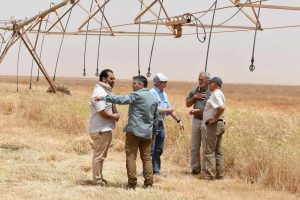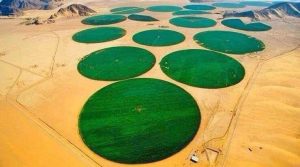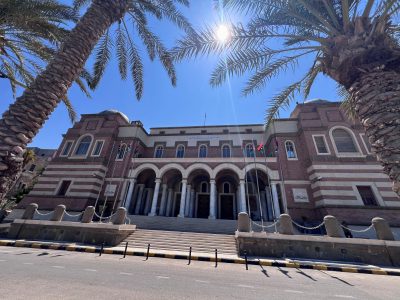Revitalizing Libya’s Agriculture Sector: Challenges and Opportunities for Food Security
Long overshadowed by oil, Libya’s agriculture today remains a small yet vital sector. The country’s arid climate and limited arable land have constrained farm output, making Libya heavily reliant on imported food. Over 90% of Libya is desert, and under 2% of land is arable, mostly in the coastal Jifara Plain near Tripoli and the Jebel Akhdar highlands in the east. With such harsh geography, domestic agriculture currently meets only about a quarter of the country’s food demand, meaning the vast majority of food is brought in from abroad. Agriculture contributes just a few percent to GDP and employs only around 6% of the workforce, a marginal role compared to oil. Before 2011, Libya imported roughly 80% of its food requirements, including staples like wheat, oils, maize, and milk. This import dependence, enabled by oil revenues, has left the nation’s food security vulnerable to external shocks. However, recent trends and policies indicate a growing recognition that revitalizing agriculture is both a developmental imperative and a viable economic strategy for Libya’s future.
Current Challenges in Libyan Agriculture
Libya’s farming sector faces well-known constraints in water, land, and inputs. Rainfall is minimal in most of the country – only about 2% of Libya’s territory receives sufficient rain for crops. The fertile pockets lie in the north, where even the wettest areas (around Jebel Akhdar) get at most 400–600 mm of rain annually. Southern and interior regions receive under 100 mm of rain, effectively barring rainfed agriculture. As a result, over 80% of Libya’s agricultural output comes from irrigated farming, tapping underground aquifers. The Great Man-Made River (GMMR) – a vast groundwater pumping network – remains the primary water source for agriculture, bringing fossil water from the southern deserts to coastal farms. Yet this water is non-renewable; decades of over-extraction have led to falling water tables and salinization in some coastal aquifers. FAO reports warn that inefficient irrigation and overuse could deplete Libya’s groundwater reserves needed for farming. Indeed, of an estimated 470,000 hectares suitable for irrigation, only about 240,000 hectares are actually irrigated due to concerns of unsustainable water use.

Land resources are similarly constrained. Out of Libya’s vast land area, only around 2.2 million hectares (about 1.2%) is cultivable. Most arable soils are already in use, and they tend to be poor in quality, with prevalent aridity and high salinity in many regions. Decades of neglect and conflict have also taken a toll. During the oil boom, agriculture was under-prioritized – its share of GDP fell from 26% in the 1950s to well below 5% in recent years. Oil wealth drew labor to easier, higher-paying urban jobs, and many farms were abandoned or underutilized. The upheavals since 2011 further disrupted farming: power cuts, insecurity, and damage to infrastructure have hampered production in rural areas. Farmers face shortages of quality seeds, fertilizers and machinery, and limited access to finance. According to recent assessments, Libya’s total agricultural output was about 2.2 million tons in 2018, dwarfed by the over 3.1 billion USD in food imports that year. In short, Libyan agriculture today operates far below its potential, constrained by water scarcity, limited arable land, and decades of under-investment. These challenges underscore why a new approach is needed to unlock the sector’s value.
Opportunities to Boost Food Production and Agribusiness
Despite the challenges, Libya’s agricultural sector holds untapped opportunities to improve food security and drive rural employment. A top priority is modernizing irrigation to make every drop of water count. Upgrading to drip and sprinkler irrigation systems, lining canals, and fixing leaks can significantly raise water-use efficiency on farms. There is scope to expand the irrigated area modestly by utilizing treated wastewater and brackish water where feasible, and by investing in desalination research (a focus of Libyan authorities in recent years). Irrigation upgrades would allow higher yields on existing farms without depleting aquifers, and could bring some fallow land into production. For example, pilot projects in Al Kufra and Al Jaghbub oases have shown that with the right techniques, desert agriculture can flourish: center-pivot systems now produce wheat and alfalfa in what were once barren sands. These successes demonstrate how combining technology with Libya’s fossil water reserves can boost output – albeit with careful attention to sustainability.
Leveraging traditional crops and knowledge is another avenue for improvement. Libya has ancient farming heritage in hardy, drought-tolerant crops that suit its environment. Barley and sorghum, for instance, have long been grown in Libyan oases and could be promoted for food and animal feed. Similarly, date palms thrive in the southern oases; Libya’s date varieties are prized and could see higher yields and quality with better orchard management. In the more temperate coastal and highland zones, olives and olive oil represent a high-potential traditional crop. The government has already launched initiatives to expand olive cultivation – including a plan to plant 20 million olive trees across various regions – and to improve olive oil quality through national competitions. Boosting olive and date production not only substitutes imports (e.g. edible oils and sugar) but can create niche export products. Likewise, horticulture offers opportunity: greenhouse farming of vegetables and fruits in peri-urban areas could reduce reliance on imported produce. Libya currently produces some fruits and vegetables (e.g. potatoes, tomatoes, watermelons), but yields are low. Introducing modern greenhouses, hydroponics, and improved seed varieties could extend growing seasons and raise output of high-demand items like tomatoes and onions, creating jobs in the process.

Building out agribusiness value chains will amplify the economic impact of any production gains. Rather than exporting raw products or depending on imports of processed foods, Libya can invest in local food processing. Opportunities range from grain milling and fortification, to dairy processing, to packaging and marketing of Libya’s unique agricultural products. For example, a domestic olive oil pressing and branding industry could develop around the expanded olive groves, targeting both local markets and export niches. The same goes for dates – upgrading processing and packaging of dates can enable Libyan producers to supply domestic confectionery and regional markets with high-quality dates. Additionally, meat and poultry production can be scaled up through better feed and veterinary services, given Libya’s tradition of livestock herding. Each of these agribusiness ventures would create downstream employment in logistics, manufacturing, and retail, linking rural producers to urban consumers. Crucially, they would also reduce Libya’s food import bill, keeping more value within the national economy. In 2018 Libya spent nearly $1 billion just on cereal imports (over 1.46 million tons of wheat alone). Replacing even a fraction of that with domestically produced grain and flour would save foreign exchange and improve resilience. In sum, by improving irrigation, focusing on climate-suitable crops like olives, dates, barley, and investing in agribusiness, Libya can gradually increase domestic food production. This would enhance food self-reliance, create rural jobs, and diversify income sources beyond the oil sector – all realistic gains for the coming decade.




